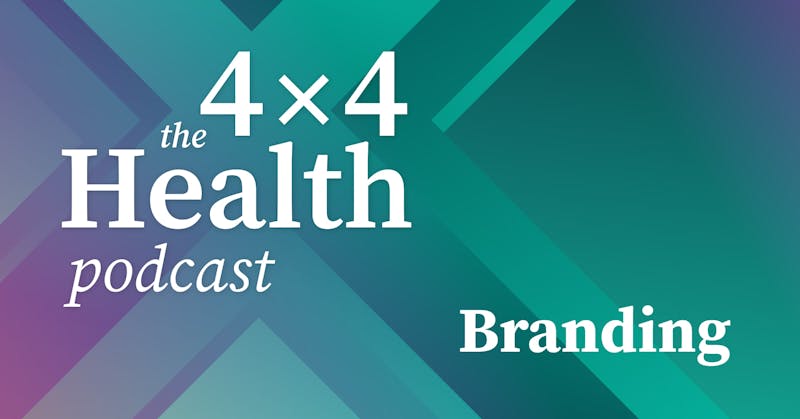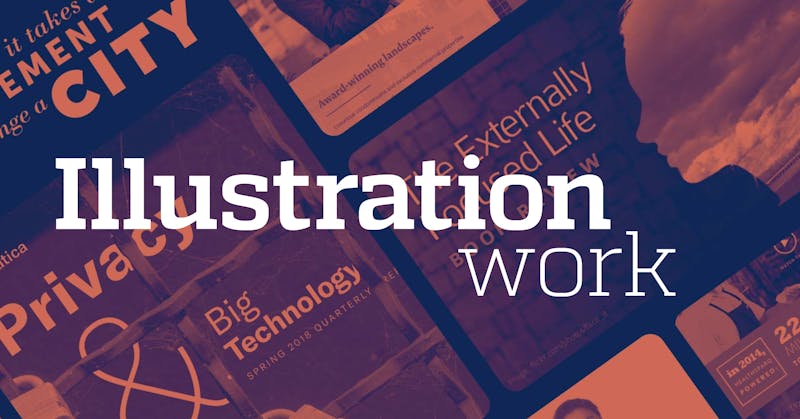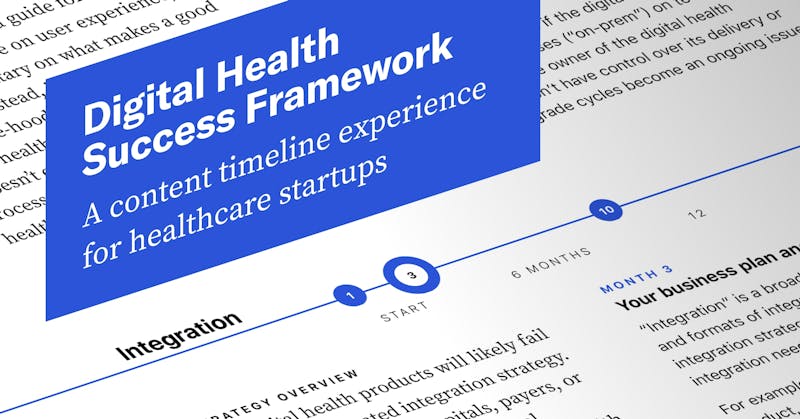HealthSparq Enterprise Pattern Library
Ember-based UI pattern library to bridge UI and UX teams
The HealthSparq Pattern Library was an internal product platform that empowered designers, product owners, researchers, QA testers and front-end developers with production tools and documentation. It was composed of an Ember web-app built by the HealthSparq UI team.
I developed and drove the concept, managed it like an internal product, worked with researchers and product managers to find out what they needed, ran sprints with the UI team for technical work and alignment, surveyed the UX team’s work for new patterns and fed those back into the design process loop. My ultimate goal was to create a design system and platform that broke down silo walls that were built around these groups. View some of the early CodePen prototypes for exploring new patterns.
HealthSparq Enterprise Pattern Library
Atomic Patterns
The organizational concept was built upon Brad Frosts’ Atomic Design concept, with elements broken into atoms, molecules, organisms, templates, and pages. We changed the meaning of some of the larger terms for internal use.
We also found that, while developers easily grasped the object-oriented concepts of Atomic Design, the nontechnical UX and UI designers struggled to communicate in the same language. One response to this was to tag and create larger categories of components around their purpose, such as navigation, content, iconography, color, etc.
In partnership with the UI team, I developed the CSS styles and architecture and usually worked directly in code, rather than layout tools like Sketch or Illustrator.
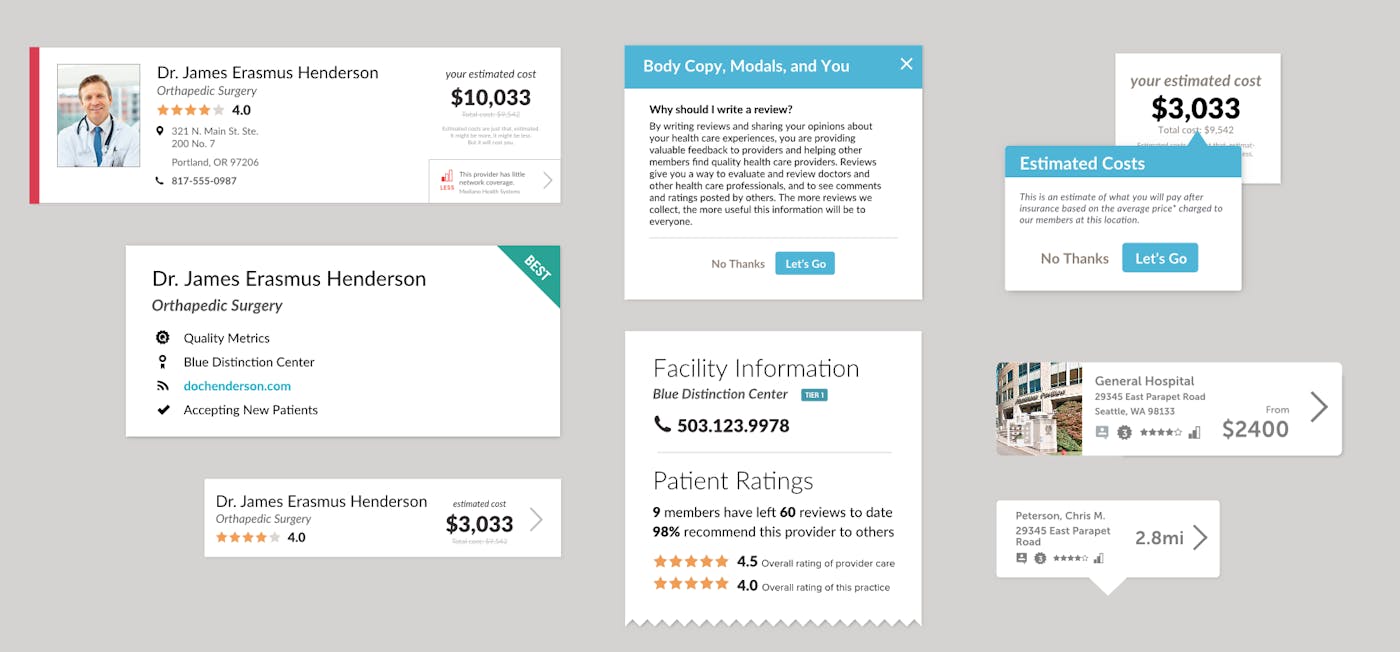
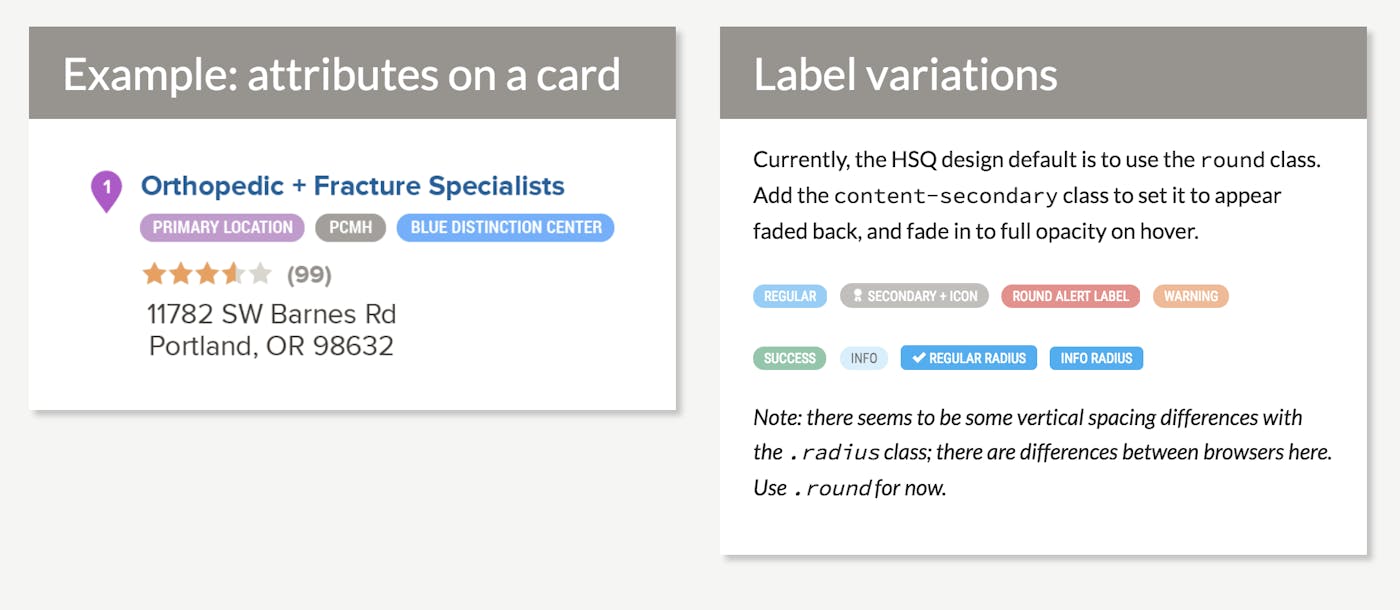
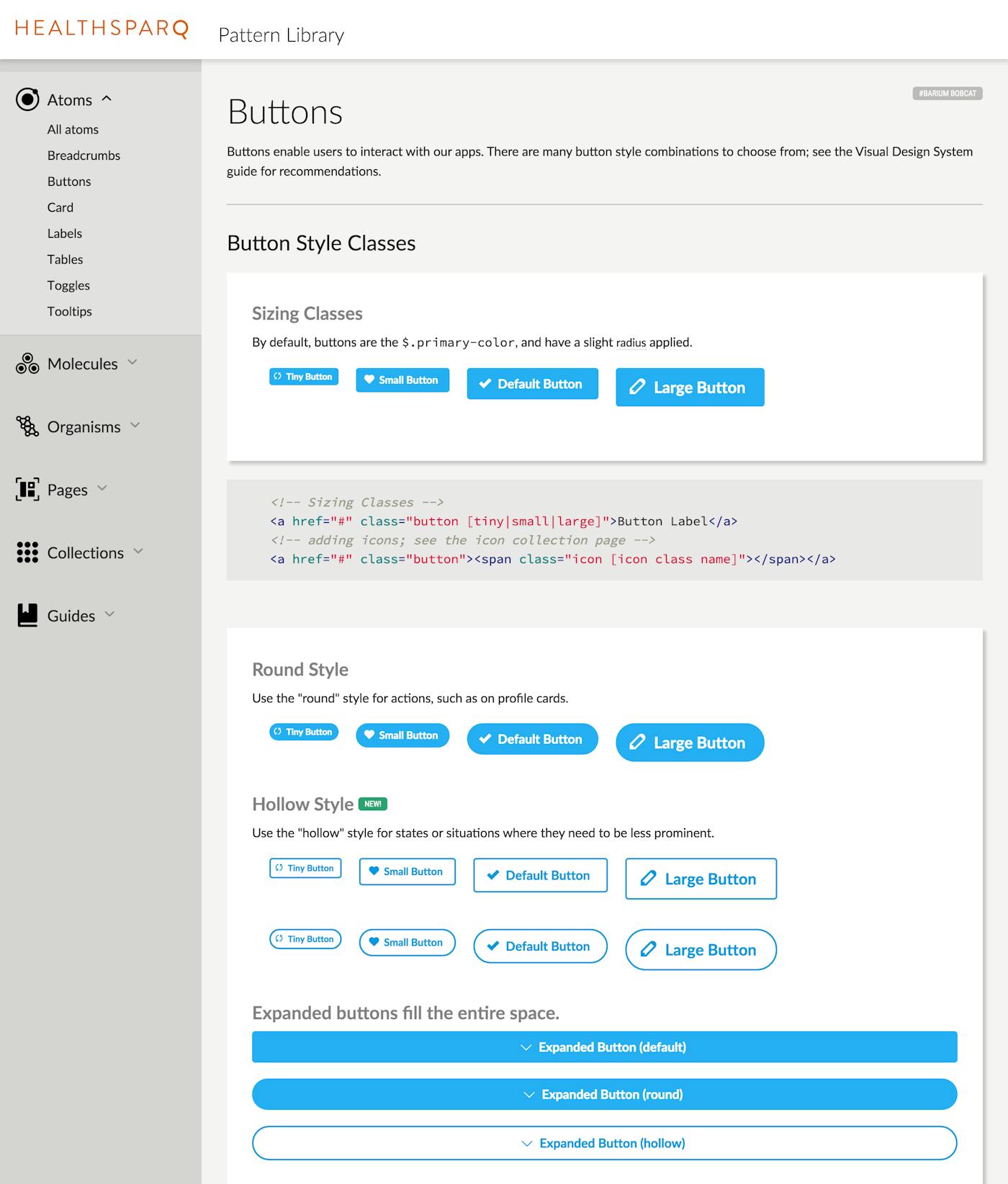
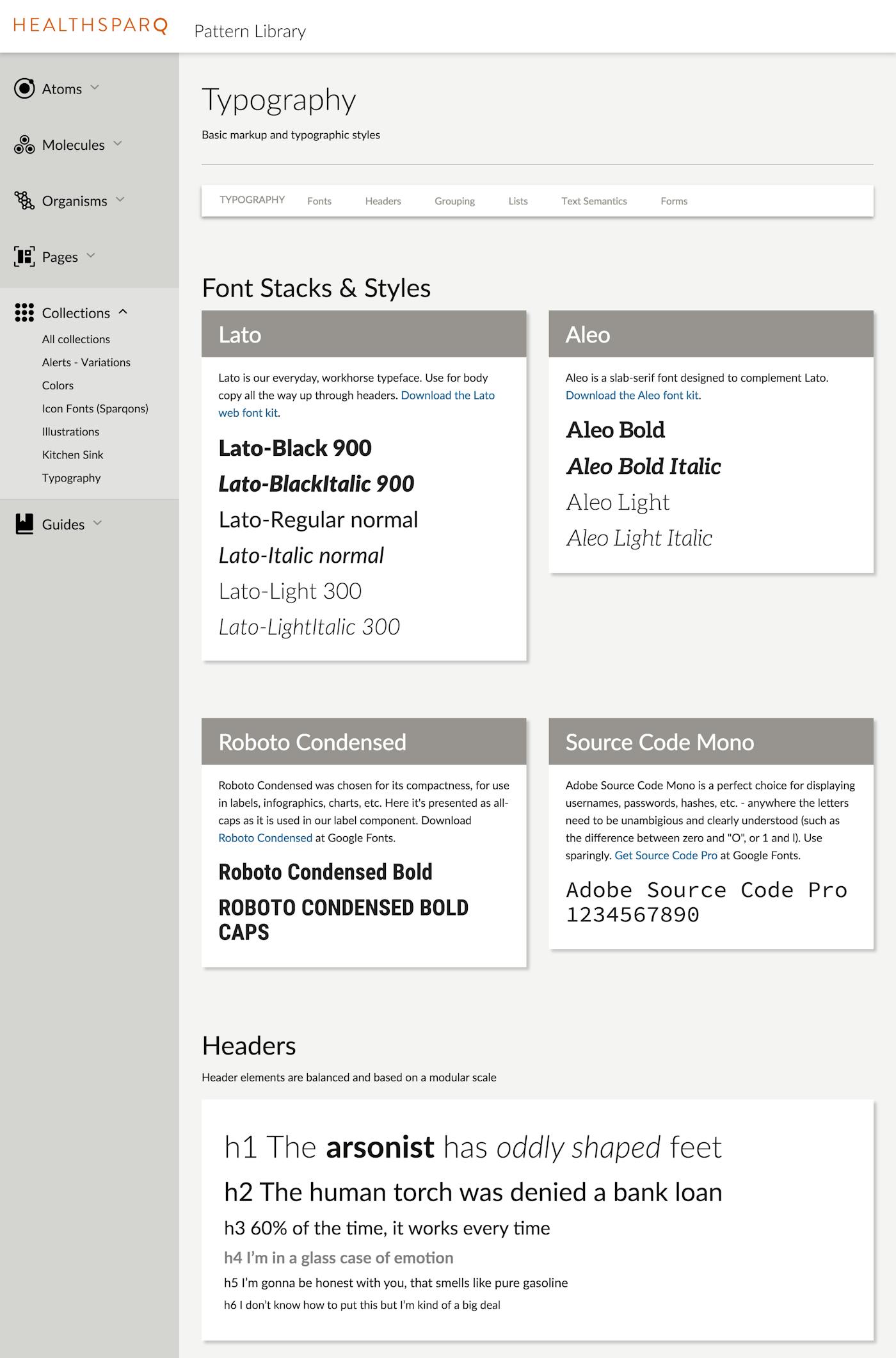
Layout Challenges
These sample layouts and views were assembled from elements in the pattern library, combined with sanitized customer data sets. It helped us identify gaps in the designs that these would leave, and design components and layouts accordingly. It underscored the value of the principle of “designing with real data”.
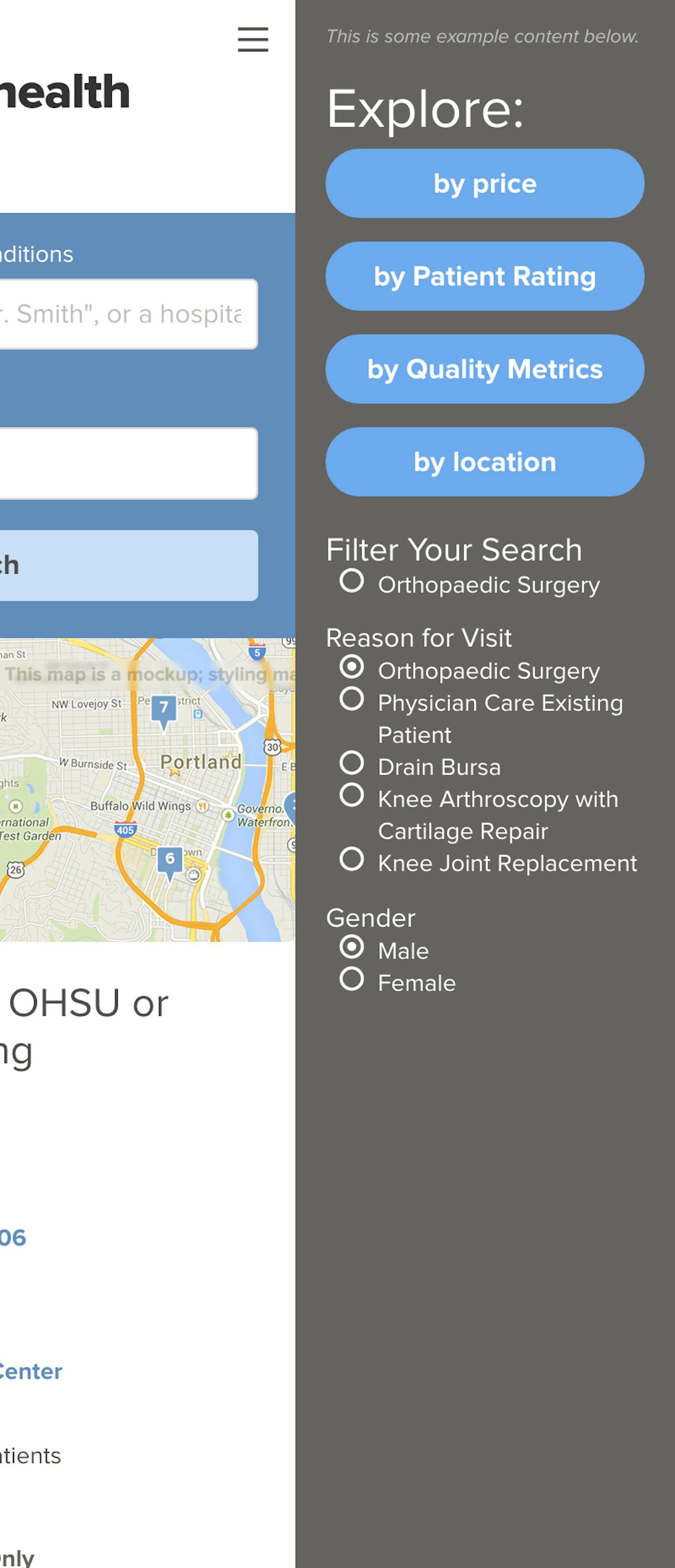
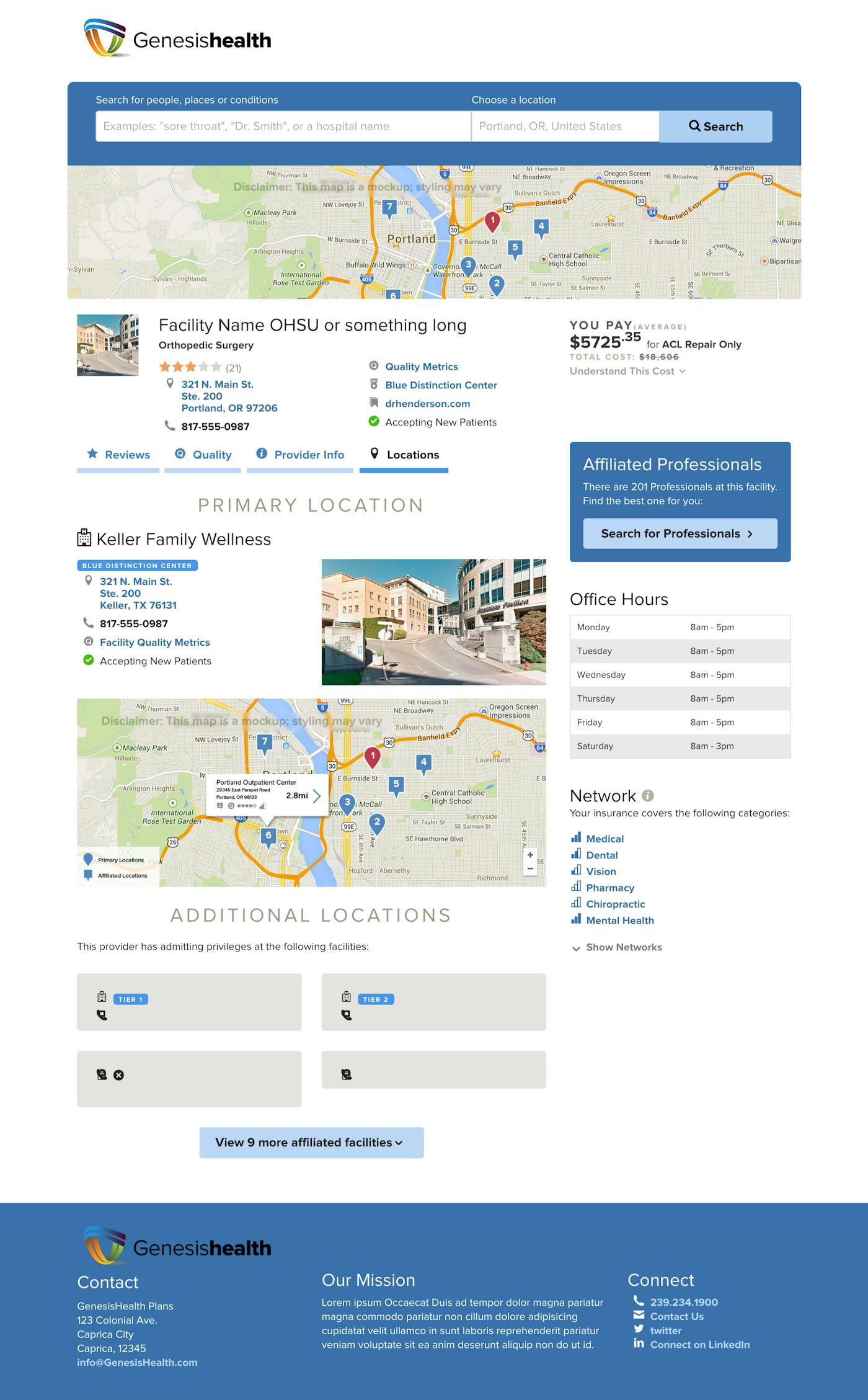
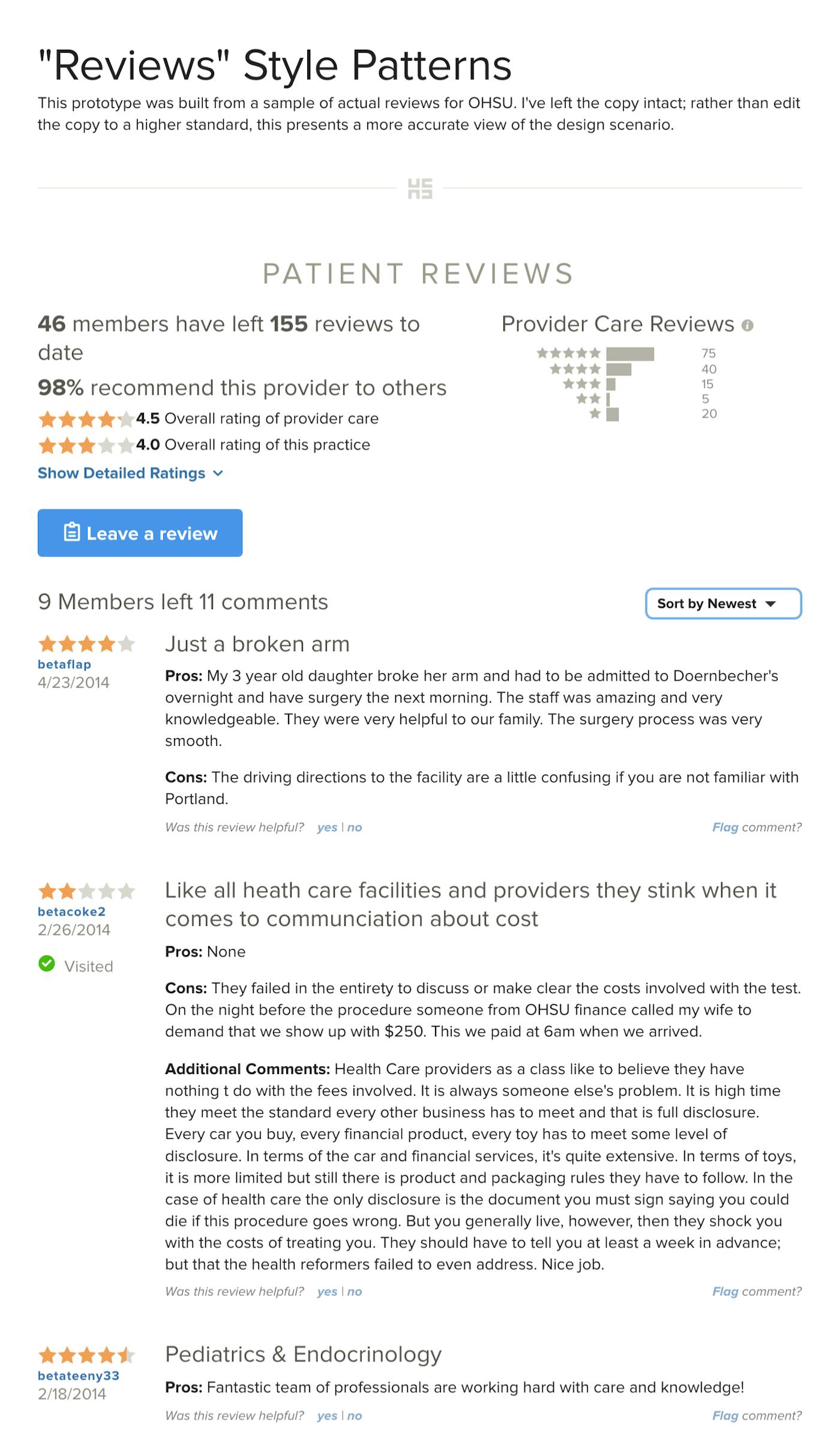
A Cross-Functional Design System
We also laid the foundation for advanced design tools that were to follow: rapid prototyping with actual, production ember components; integrating live datasets (which varied greatly per customer, and often had massive gaps or surprises within), and theming tools (which would let us explore various white-label scenarios and develop theming tools for customers). The intent was to create a platform for constructing production-ready Ember components that would, when moved to the main product (called UICore), be re-consumed by the pattern library. This would let us shorten or collapse the gap between prototyping and production—accelerating product development and improving alignment across teams.
I wrote and designed this product’s roadmap and gave regular presentations to the company on how the pattern library project could help each constituency.
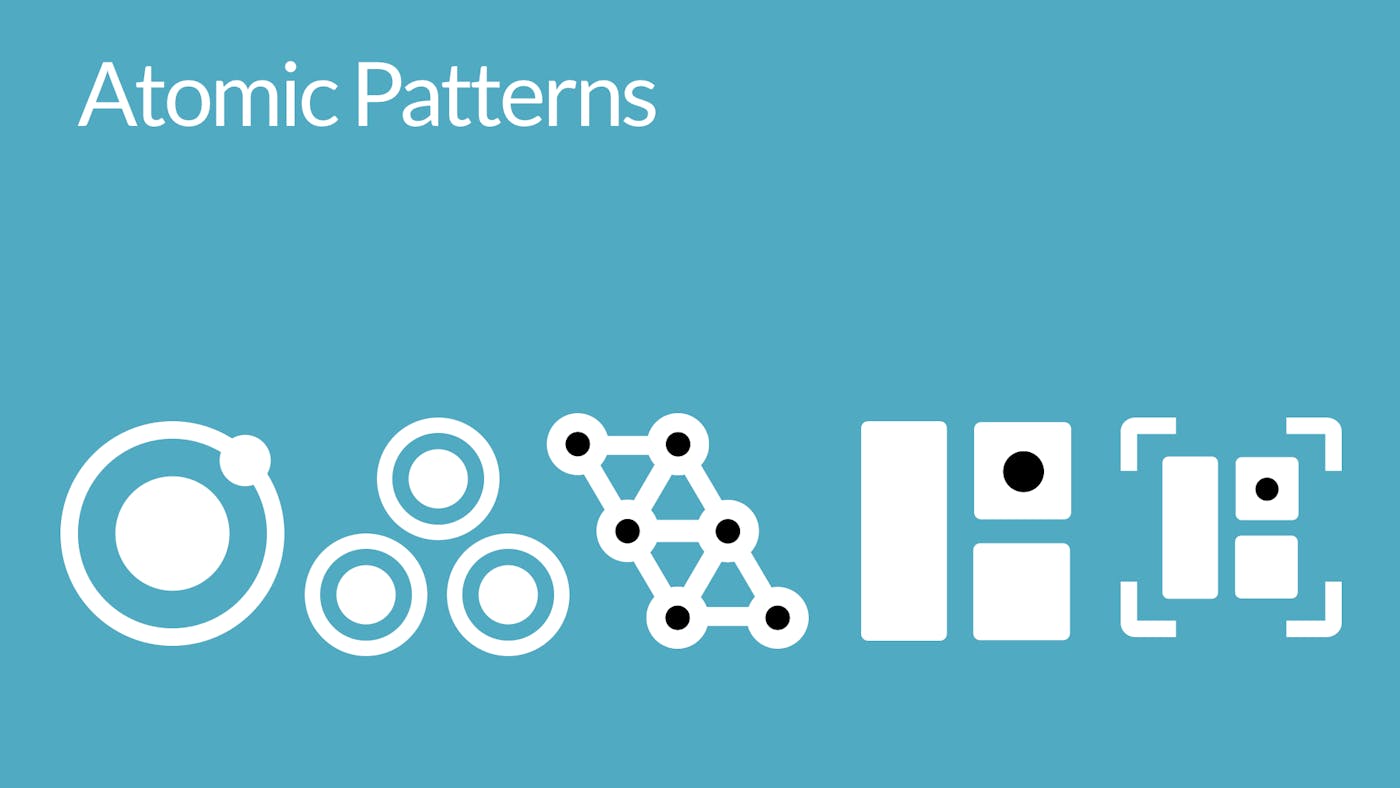

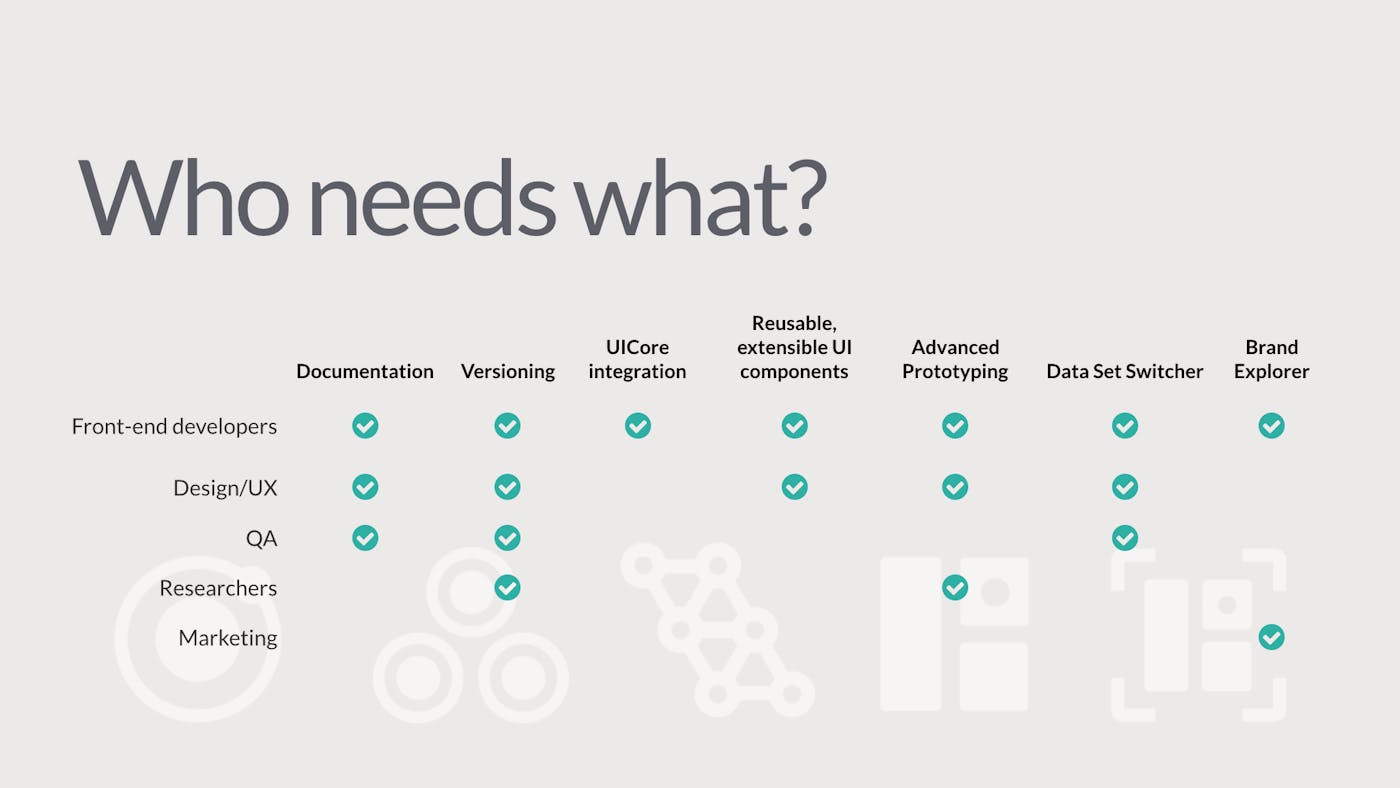

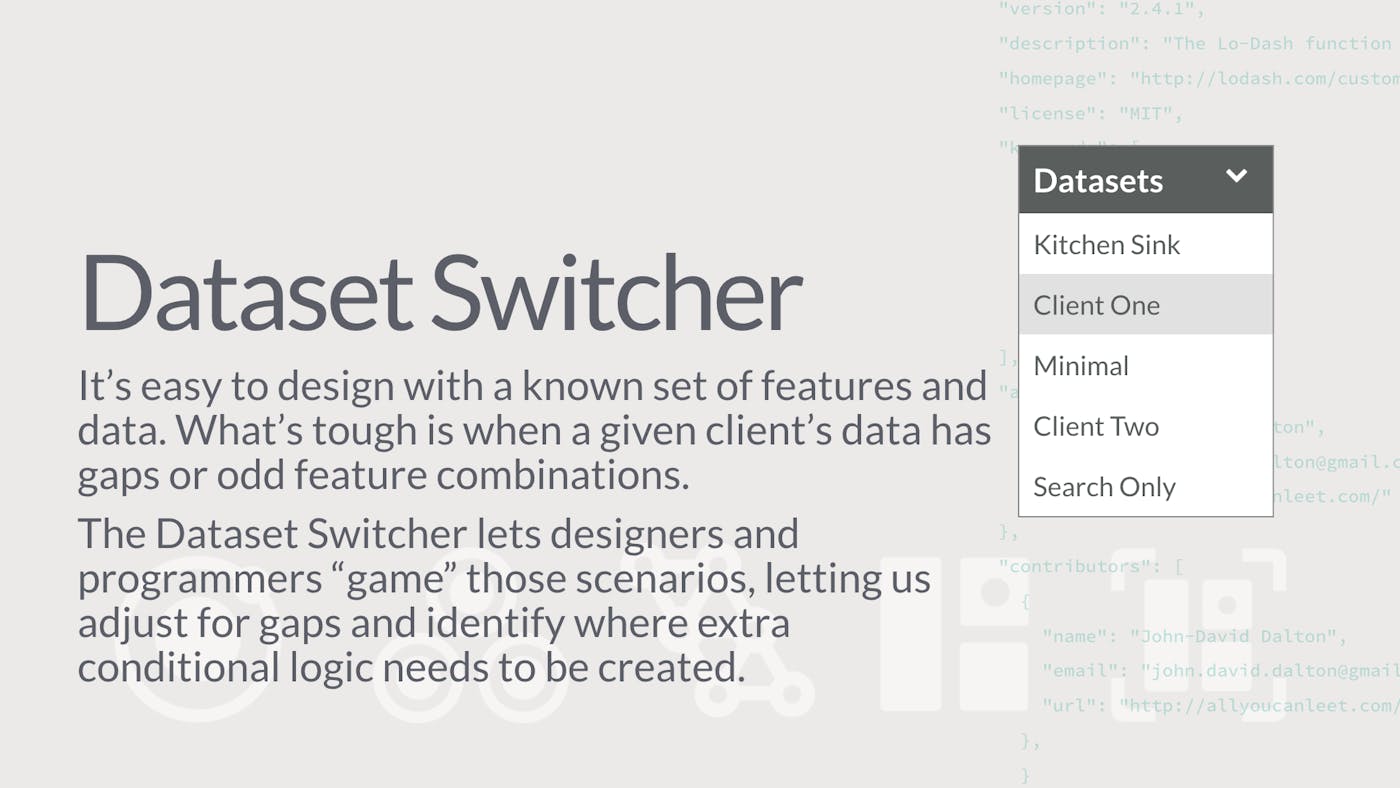
Aligning the company around a pattern-based workflow
To help the various product teams and activities align and work coherently together, I helped the director of UX and other teams leads visualize the process and workflows. This is a key activity of any enterprise pattern library. It exists to clarify, support and define the current consensus around any product direction.
HSQ Pattern Library overview - workflow
This decision tree was helpful when working with the UI & UX teams to encourage them to find and use existing design patterns where possible, and a process for defining and developing new, non-standard ones where absolutely necessary.

